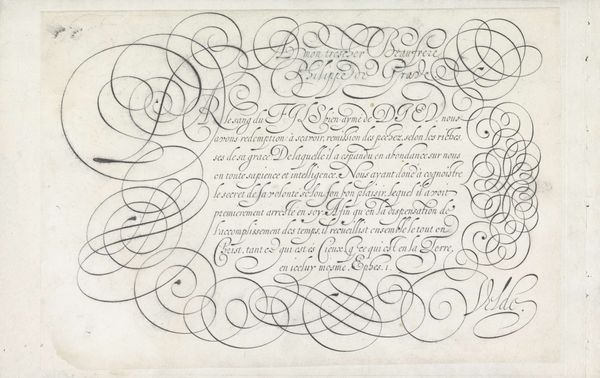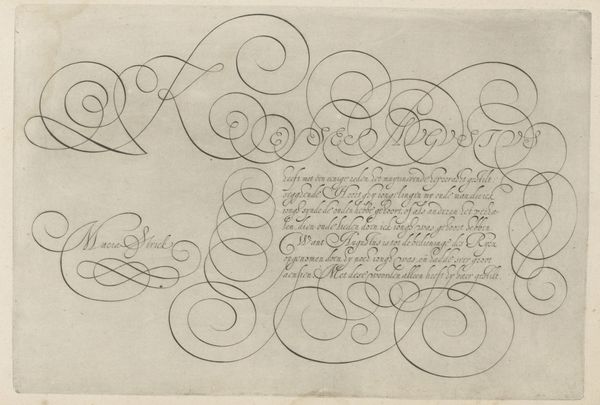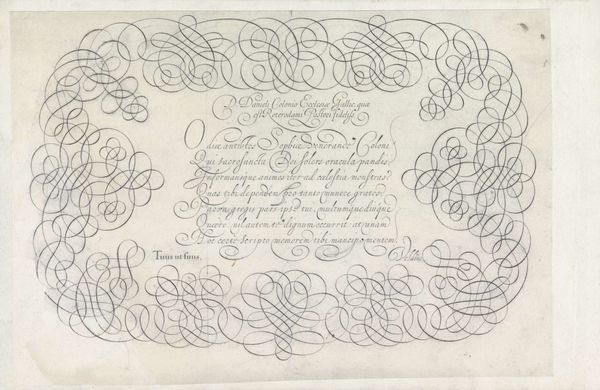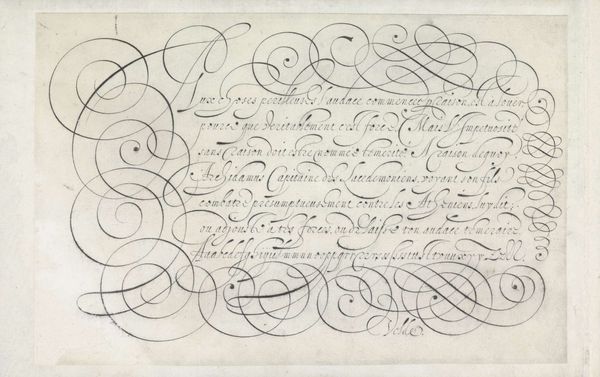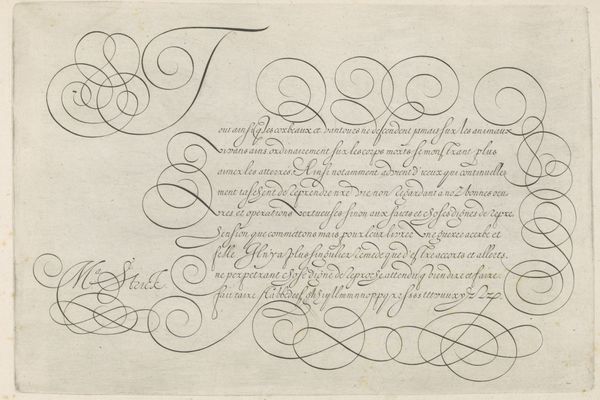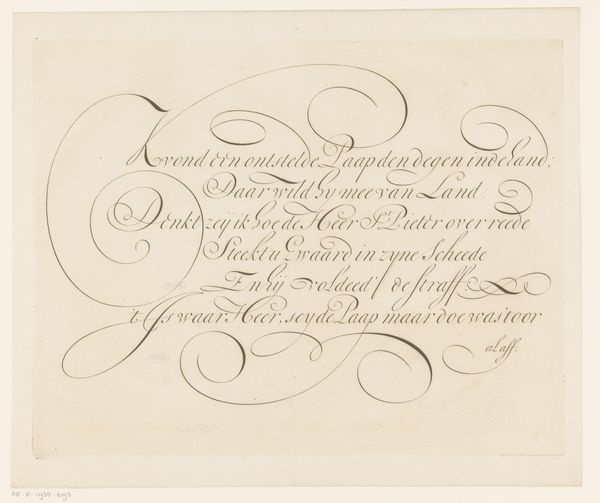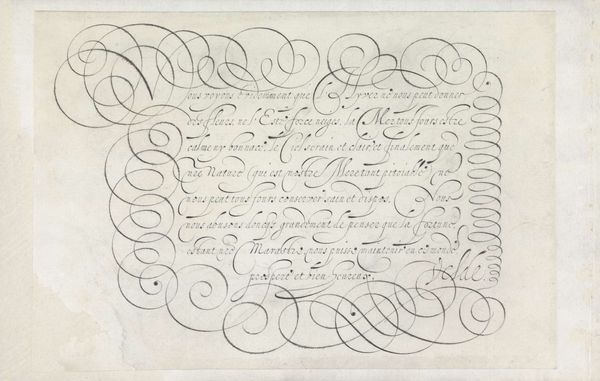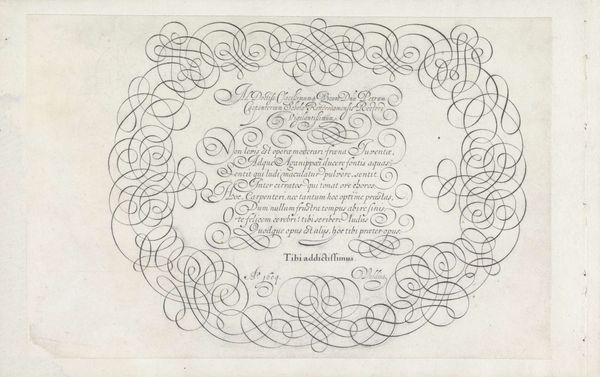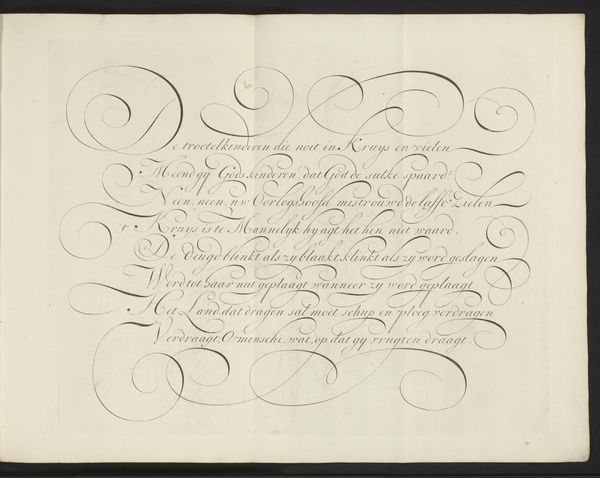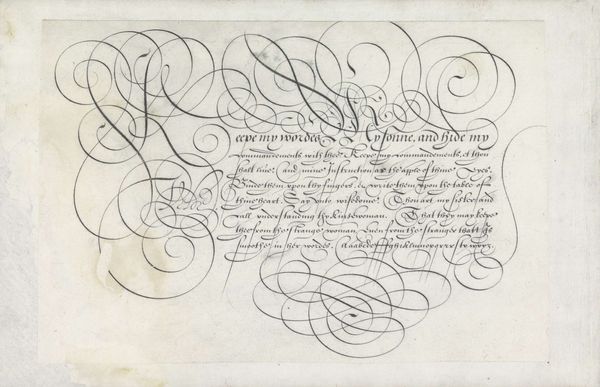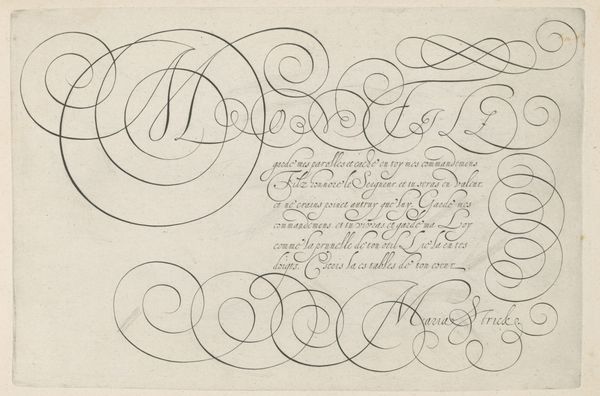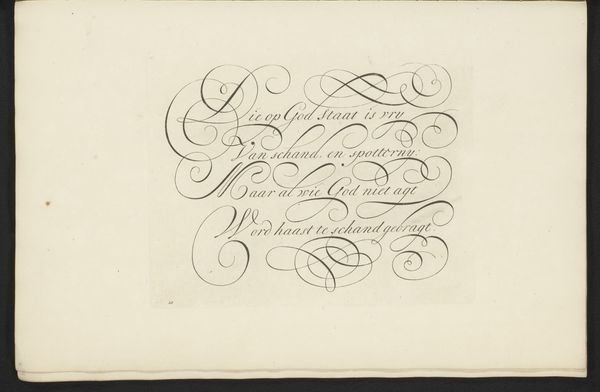
Schrijfvoorbeeld met de tekst: Aristoteles onder-vraecht synde wat (...) 1618
0:00
0:00
drawing, graphic-art, paper, ink
#
portrait
#
drawing
#
graphic-art
#
hand-lettering
#
dutch-golden-age
#
lettering
#
hand drawn type
#
hand lettering
#
paper
#
ink
#
hand-drawn typeface
#
fading type
#
stylized text
#
calligraphic
#
thick font
#
calligraphy
#
small lettering
Dimensions: height 192 mm, width 280 mm
Copyright: Rijks Museum: Open Domain
This calligraphic writing sample was made by Lieven Willemsz. Coppenol, probably in the mid-17th century, using pen and ink. Coppenol was a master in the art of ornamental script, and this piece exemplifies the cultural status of calligraphy in the Dutch Golden Age. This wasn't just about conveying information, but about visually embodying wisdom and eloquence. The elaborate flourishes and carefully constructed letterforms are a testament to the skill, discipline and aesthetic values upheld by the calligrapher's guilds of the time. Consider the Dutch Republic's emphasis on trade, literacy, and civic engagement, and calligraphy's role in legal documents, personal correspondence, and public inscriptions. Here, writing transcended mere communication, becoming an art form reflecting the social and intellectual values of its time. To understand this further, we can look into the manuals and teaching materials used, as well as the social networks of calligraphers. This tells us a great deal about the intersection of art, commerce, and social life in the Dutch Golden Age.
Comments
No comments
Be the first to comment and join the conversation on the ultimate creative platform.
